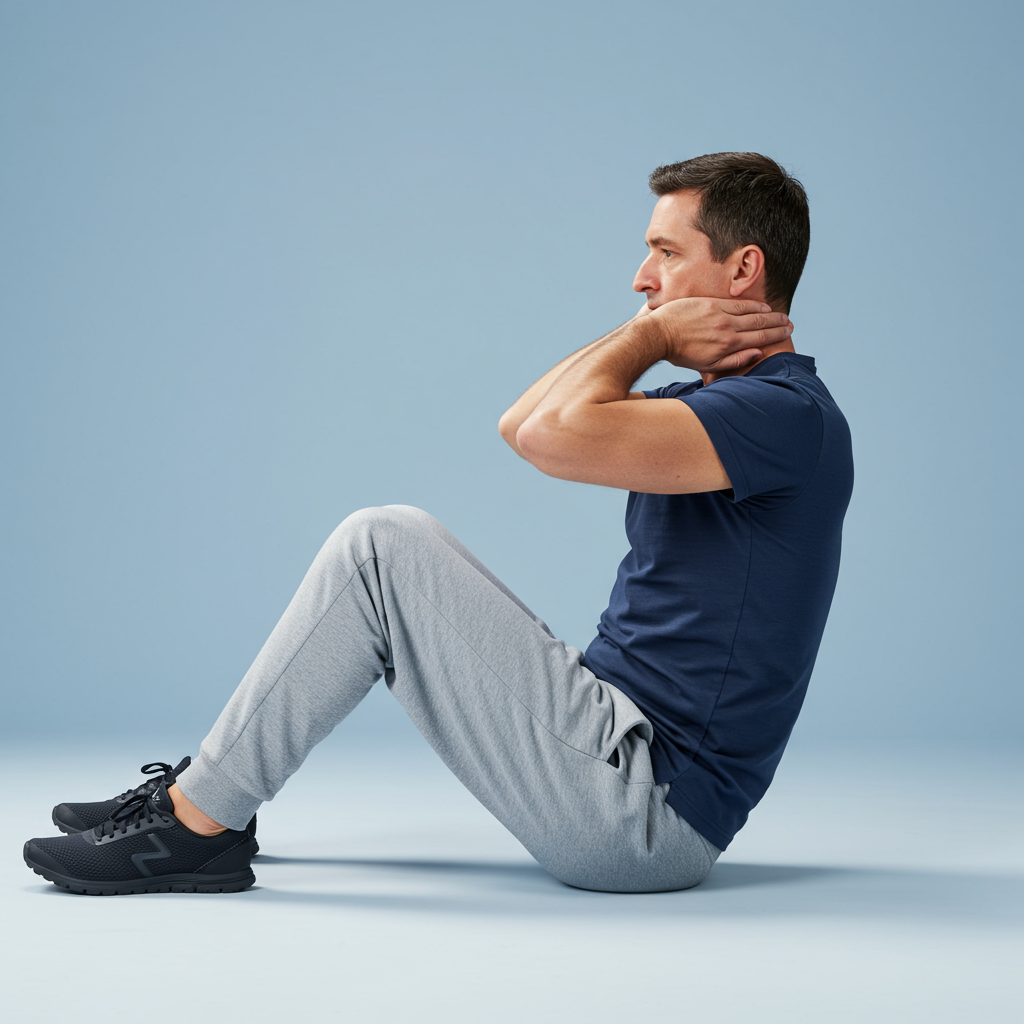How long might you live? It’s a question many ponder, and while no single factor holds the definitive answer, scientific research is increasingly pointing to surprising indicators found in simple physical abilities. Forget complex lab tests for a moment; a new study highlights how a straightforward exercise performed on your floor could offer valuable insight into your potential longevity.
Researchers recently investigated whether non-aerobic physical fitness, specifically measured by a sitting-rising test (SRT), could predict premature death in middle-aged and older adults. Their findings, published in the European Journal of Preventive Cardiology, suggest a compelling link between this simple functional movement and mortality risk.
Understanding the Sitting-Rising Test (SRT)
The sitting-rising test is designed to evaluate several key components of non-aerobic fitness critical for daily function and mobility: muscle strength and power, flexibility, balance, and body composition. The test itself is disarmingly simple, yet not necessarily easy:
Participants are asked to sit down on the floor and then stand back up, using the absolute minimum support necessary. They are instructed to focus on minimizing support rather than speed.
A perfect score of 10 points is achieved by performing the sit and rise without using any hands, knees, elbows, or requiring any steadying or loss of balance. Points are deducted for using any part of the body for support (e.g., hand on knee, touching the floor) or for losing balance during the movement.
The Study’s Stark Findings
The study followed 4,282 adults aged 46 to 75 over a period spanning from 1998 to 2023, with follow-up data gathered about 12 years into the observation period. While the study was conducted at a private clinic in Brazil and primarily involved participants from higher socioeconomic strata, the correlations found were significant.
After tracking participants for natural causes of death, the results revealed a striking pattern linked to their initial SRT scores:
Those who scored a perfect 10 points on the test had a death rate of just 3.7%.
Individuals scoring 8 points saw their death rate triple to 11.1%.
- For those scoring between 0 and 4 points, the mortality rate dramatically increased to 42.1%.
- www.independent.co.uk
- www.bbc.com
- www.mayoclinic.org
- www.verywellmind.com
- www.nationalgeographic.com
Researchers concluded that non-aerobic physical fitness, as assessed by the SRT, was a significant predictor of natural and cardiovascular mortality within the studied group.
Beyond Sitting and Rising: Other Simple Predictors
The SRT isn’t the only simple physical test gaining attention for its potential to predict how well you’re aging. Other fundamental movements also offer valuable clues about overall health and longevity.
Walking Speed: A Window into Overall Aging
Your walking speed, or gait speed, is far more than just a measure of how fast you can move. It reflects the integrated function of multiple body systems – your musculoskeletal, cardiovascular, nervous, and even cognitive systems working in concert.
Research consistently shows a strong link between slower walking speed and adverse health outcomes, including an increased risk of hospitalization, heart attacks, and mortality. A 2019 study even found that variations in walking speed among 45-year-olds correlated with markers of “accelerated aging” across multiple organ systems and poorer cognitive function, suggesting gait speed in middle age can be a window into lifelong brain health trajectories. While a natural slowdown occurs with age, a marked decline can signal underlying issues.
The Importance of Balance: The One-Leg Stand Test
Another seemingly simple test with significant predictive power is the ability to stand on one leg for a set period, often 10 seconds. Experts view this as a key indicator of neuromuscular health and how well someone is aging.
Balance is a complex skill relying on input from your vision, your somatosensory system (how your body senses its position), and your vestibular system (in your inner ear, related to spatial orientation). The ability to balance on one leg declines for many after age 40, and difficulty with this simple task is strongly associated with an increased risk of falls and fractures, which can severely impact independence and longevity. The Mayo Clinic highlighted in 2024 that maintaining balance on one leg might be a better indicator of aging health than traditional measures like strength or gait alone, and balance issues can sometimes even signal underlying health conditions.
Why Do These Simple Tests Matter?
These simple tests – sitting-rising, walking speed, one-leg stand – are powerful because they assess functional fitness. They evaluate your ability to perform basic movements essential for daily life, which requires the coordinated effort of strength, flexibility, balance, and coordination.
Declines in these areas are not merely inconveniences; they are often symptomatic of broader age-related changes or underlying health issues affecting multiple bodily systems. While the original SRT study had limitations (like not fully controlling for participants’ prior physical activity levels), the collective evidence from these different simple tests underscores the predictive power of maintaining robust functional physical fitness as you age.
Improving Your Score (and Your Health)
The encouraging news is that these aspects of physical fitness are trainable at virtually any age. While genetics play a role, consistent physical activity can significantly improve your strength, balance, flexibility, and overall functional capacity.
Incorporating a variety of movements into your routine that challenge your balance, strength, and mobility can help you not only perform better on these tests but, more importantly, support healthier aging and potentially increase your longevity. Simple practices like regular walking, practicing standing on one leg while brushing your teeth, or incorporating bodyweight exercises like squats and lunges can make a difference.
Assessing your ability with the sitting-rising test, measuring your walking speed, or timing your one-leg stand might offer a surprisingly insightful glimpse into your health trajectory. More importantly, they provide tangible goals for improving your physical fitness, which is a powerful investment in your long-term well-being.



